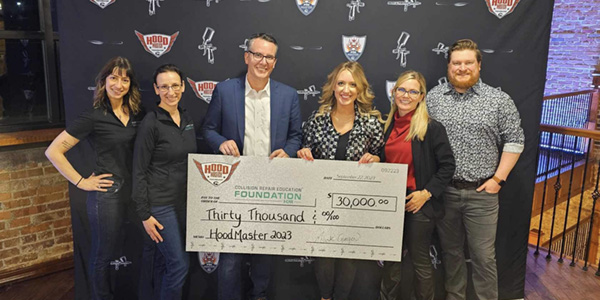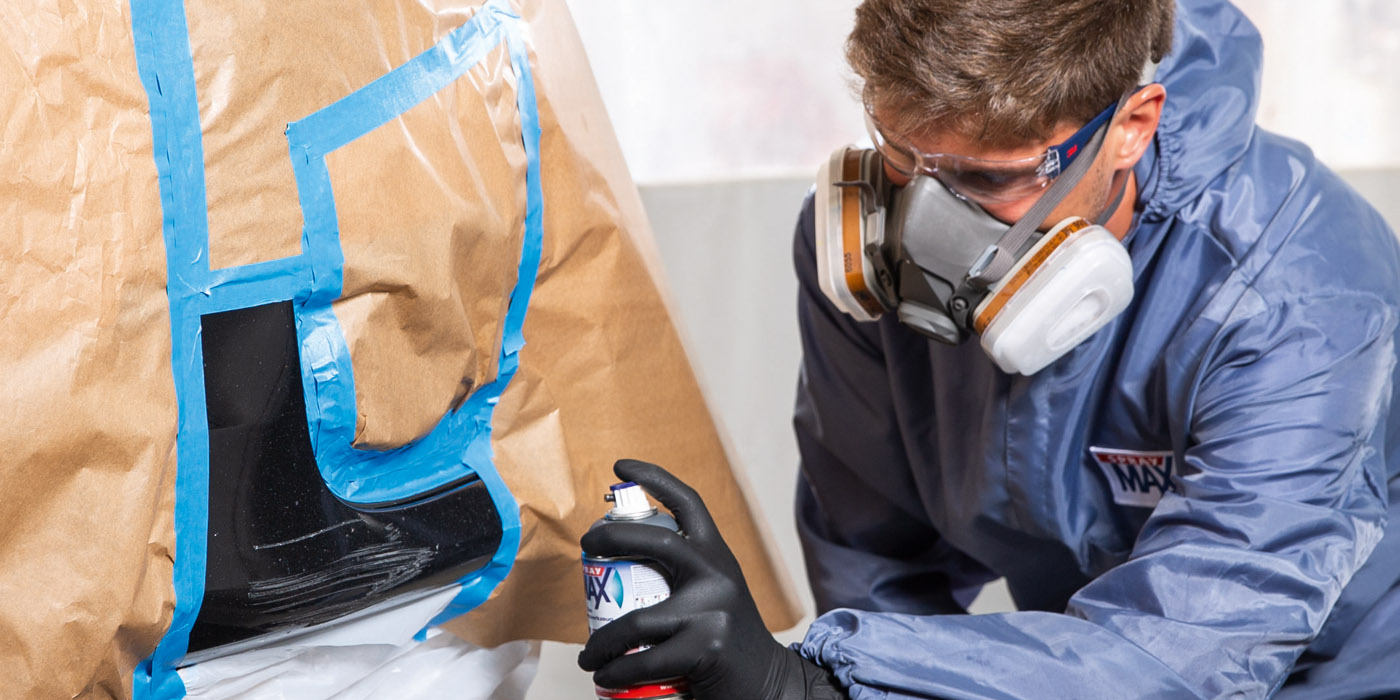Specific strategies for painting cars have been the hallmark of productive painters throughout the many years I’ve been in our industry. Successful painters don’t just wander into the booth and start pulling the trigger – they have a plan. How to prep the vehicle, adjust the spray gun, mix the components, position the car within the booth and where to begin and end are all part of producing attractive paint work quickly. You make money in collision repair by getting it done right and fast the first time.
Having a plan is still key to refinishing success, but the elements of the plan have changed and are much less at the whim of the painter these days.
Birth of the Spray Gun
The critical piece of application equipment, the spray gun, has become more efficient and more expensive over time. When I began selling them in 1970, shops’ spray guns of choice were a Binks No. 7, a DeVilbiss MBC or JGA, or a Sharpe 75. All were suction feed and based on the design created by Dr. Allen DeVilbiss, an ear, nose and throat doctor in Toledo, Ohio. Using some tubing, a rubber bulb and the base of an oil can, DeVilbiss created the atomizer to enable his patients to spray medicine on their sore throats. In 1907, Allen’s son, Thomas DeVilbiss, used his father’s principal design to create the first hand-held spray gun.
All suction, or siphon, feed guns work on the same notion: crossing air streams in front of the tip to create a partial vacuum, lowering the atmospheric pressure (14.7 PSI). By virtue of the hole in the top of the attached one-quart, push-lock cup, the liquid in the cup rushes up the pickup tube to fill the vacuum and is blown onto the surface to be painted.
While these devices were faster than applying the coatings with a brush, the cloud of turbulent air flying around in front of the air cap blew much of the paint into the atmosphere. Until the air quality folks in Southern California passed Rule 1151 in 1987, no one cared that the transfer efficiency (how much of the paint reached the surface and how much was lost in overspray) was only about 30 percent for suction-feed guns. As much as 70 percent of the liquid in the bottom-mounted cup was lost into the atmosphere.
Modern Marvels
These days, the meticulously machined, cleverly designed, small fluid tip diameter, high transfer efficiency, gravity feed spray guns do a better job. With the cup mounted above the tip, the paint runs down into the atomizing air stream. These guns are able to finely atomize high solids coatings and keep at least 65 percent of the paint on the target and out of the atmosphere.
What hasn’t changed is the painter’s ability to wave the gun at the car productively. The necessity to smoothly trigger, pass and release the gun exactly parallel to the surface are mandatory to duplicate the OEM finish. Gun distance, hand speed, head position, body stance and general coordination are still critical to good-looking paint work the first time.
20-20 Rule
Back when I wanted to learn to paint cars, I asked for the advice of three of my customers whose work I admired. They each had slightly different strategies about where to begin, how fast to move, how to reach difficult areas (rocker panels, wheel wells, etc.), but they each had a consistently repeatable plan. One lesson I took away from their instruction was that they all had some valuable tips. If you learn to paint from a single co-worker, you may miss some important elements – derisively referred to as the 20-20 Rule, as in, “He learned to paint in 20 minutes and has been doing the same thing for 20 years.”
Every paint manufacturer offers hands-on training on the most productive way to apply their products. If you haven’t attended your brand’s classes, you may be missing some key tips on getting great-looking work even more quickly.
Spray Latitude
Prior to the latest legislation to further reduce air pollution by lowering the solvent content in auto paint, painters had many choices in blending the right concoctions to accommodate their unique painting styles and conditions. One paint company called this ability “spray latitude,” meaning the painter could speed up or slow down the dry and evaporation rates to accommodate the weather conditions or their own proclivities by changing solvent and catalyst speeds.
For years, I think the industry closely approached chemical parity in paint, meaning that the solvent-based offering from brand A was similar to the offerings from brands B, C and D. Each brand had some distinguishable features, advantages and benefits, but they mixed and sprayed in familiar fashion.
Low-VOC
One of the biggest changes in my era has been the adoption of compliant, low-VOC coatings. Whereas the existing National Rule coatings mix and spray in similar ways, the compliant systems use either water (no VOC) or one of five compliant solvents to meet mandated maximum levels of volatile organic compounds. In researching the eight articles I’ve written for BodyShop Business on low-VOC coatings, I’m now clear that painters are required to mix and apply them in specific manners. Painters can no longer mix solvents and catalysts to get the results they desire. First, water is a one-speed solvent, and second, the H2O chemistry employed by brands A, B, C and D are quite different from each other. In the course of my many interviews with regulated Southern California painters, the ones having trouble were those who insisted on shooting the new coatings the old way.
Their Way, Not Yours
Some elements are still the same between waterborne and solvent-based paints. For example, moving air past any waterborne finish helps drive out the water, and good prep work still makes for clean paint jobs. But the steps to mix, spray and recoat the various waterborne offerings are brand specific. Whether legislation has come to your market or not, the color match and clarity of waterborne finishes do a great job of matching the OEM coating. But understand you’ll have to follow the manufacturer’s exact instructions rather than mixing your own brew and applying it your way. You’ll still need a plan to productively paint cars, but there are fewer painter-controlled variables. Let your jobber or paint rep show you how to get it done correctly and quickly.
Mark R. Clark is the owner of Professional PBE Systems in Waterloo, Iowa; he is a well-known industry speaker and consultant. He is celebrating his 25th year as a contributing editor to BodyShop Business.













